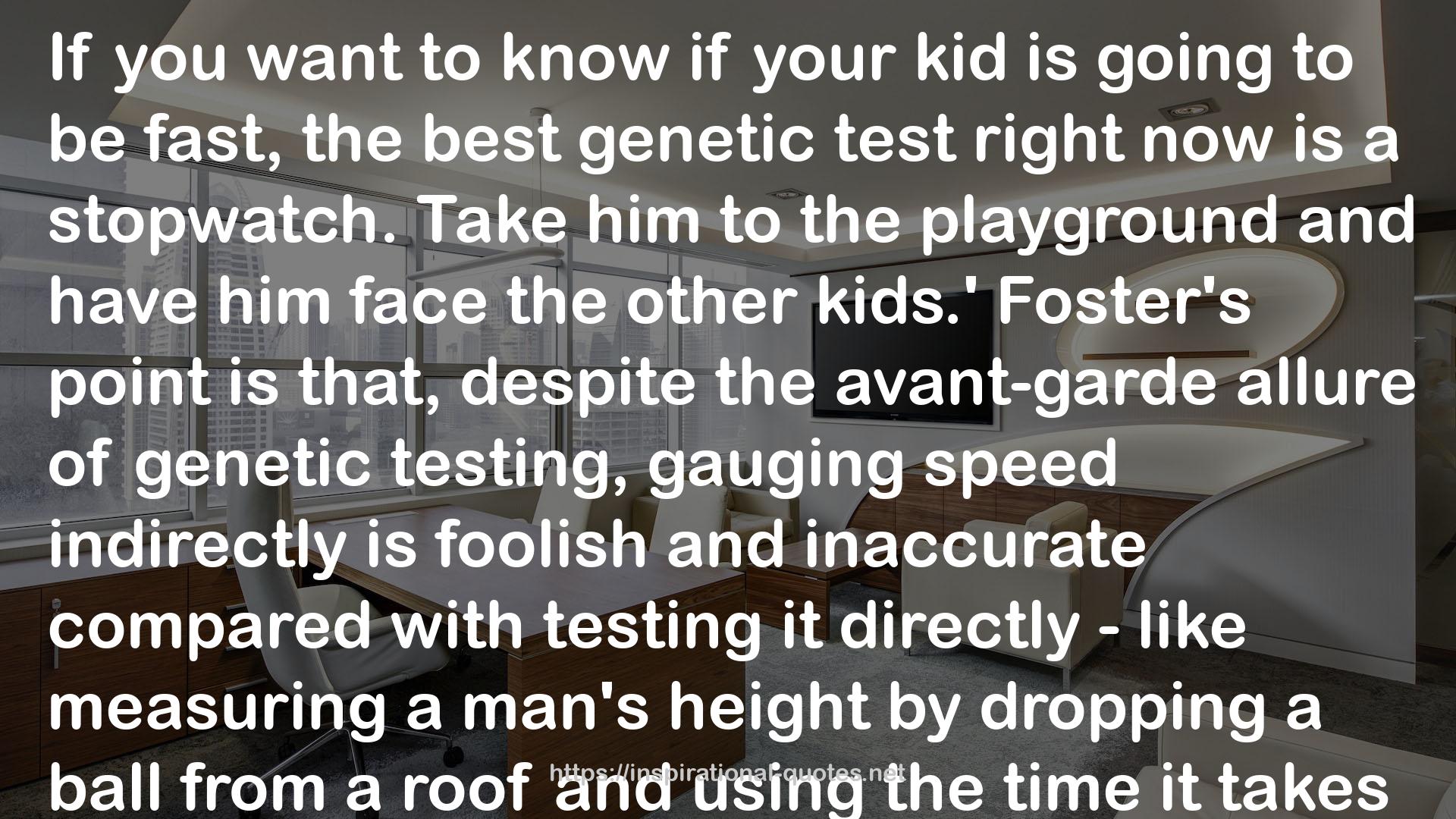5
" The bottom line is that not only are NBA players outlandishly tall, they are also preposterously long, even relative to their stature. And when an NBA player does not have the height required to fit into his slot in the athletic body types universe, he nearly always has the arm span to make up for it. In the post–Big Bang of body types era, whether with height or reach, almost no player makes the NBA without a functional size that is typical for his position and often on the fringe of humanity. Only two players from a 2010–11 NBA roster with available official measurements have arms shorter than their height. One is J. J. Redick, the Milwaukee Bucks guard who is 6'4" with a 6'3¼" arm span, downright Tyrannosaurus rex-ian in the NBA.* The other is now-retired Rockets center Yao Ming. But at a height just over 7'5", Yao, whose gargantuan parents were brought together for breeding purposes by the Chinese basketball federation, fit into his niche just fine. "
― David Epstein , The Sports Gene: Inside the Science of Extraordinary Athletic Performance
11
" The Lost Boys had hardly unpacked by the time they started appearing in local newspaper headlines for their exploits on high school track teams. “Only months after settling in Michigan, two Sudanese refugees are finding that they are among the fastest high school runners in the state,” went the lead of one AP article. Another, in the Lansing State Journal, noted that Abraham Mach, a Lost Boy who had no competitive running experience before arriving at East Lansing High, was the most outstanding performer in the thirteen-to-fourteen age group at the 2001 National AAU Junior Olympic Games, medaling in three events. Mach, who had been living in a Kenyan refugee camp just one year earlier, went on to become an NCAA All-American at Central Michigan in the 800-meters. "
― David Epstein , The Sports Gene: Inside the Science of Extraordinary Athletic Performance
14
" Campitelli and Gobet found that 10,000 hours was not far off in terms of the amount of practice required to attain master status, or 2,200 Elo points, and to make it as a pro. The average time to master level in the study was actually about 11,000 hours—11,053 hours to be exact—so more than in Ericsson’s violin study. More informative than the average number of practice hours required to attain master status, however, was the range of hours. One player in the study reached master level in just 3,000 hours of practice, while another player needed 23,000 hours. If one year generally equates to 1,000 hours of deliberate practice, then that’s a difference of two decades of practice to reach the same plane of expertise. “That was the most striking part of our results,” Gobet says. “That basically some people need to practice eight times more to reach the same level as someone else. And some people do that and still have not reached the same level.”* Several players in the study who started early in childhood had logged more than 25,000 hours of chess practice and study and had yet to achieve basic master status. While the average time to master level was 11,000 hours, one man’s 3,000-hours rule was another man’s 25,000-and-counting-hours rule. The renowned 10,000-hours violin study only reports the average number of hours of practice. It does not report the range of hours required for the attainment of expertise, so it is impossible to tell whether any individual in the study actually became an elite violinist in 10,000 hours, or whether that was just an average of disparate individual differences. "
― David Epstein , The Sports Gene: Inside the Science of Extraordinary Athletic Performance

